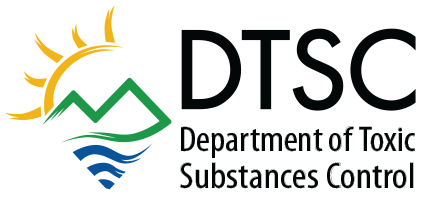Universal Wastes – Mercury Waste
What is Universal Waste?
Mercury-containing products exhibit hazardous characteristics as described in the California Code of Regulations, title 22, chapter 11 and are classified as a type of hazardous waste called “universal waste”. Universal wastes (UW) are hazardous wastes that pose a lower immediate risk to people and the environment when handled properly. Due to this lower risk, universal wastes can be handled and transported under more relaxed rules compared to other hazardous wastes.
What is Mercury Waste?
Mercury-added products includes any product or device that contains mercury. These mercury-added products and equipment can be a major source of mercury contamination in the environment. Mercury does not break down in the environment and it can build-up in the tissues of fish, which may then be consumed by people. Mercury is a dangerous neurotoxin that can cause a variety of adverse health effects such as nerve damage and birth defects.

A mercury thermostat contains about 3 grams of mercury, and it can take only one gram of mercury to contaminate an entire 20-acre lake.
Even though many mercury-added products and equipment were banned in California in 2006, there are still mercury products in circulation in California today. All of these mercury-added products must be disposed of properly in order to limit further environmental contamination and prevent potential harm to humans and animals.
Mercury-containing products are subject to universal waste regulations. Disposal of these items in a solid waste landfill is prohibited by law.
Mercury Waste Commonly Found in the Home
- Mercury-added thermostats
- Mercury thermometers
- Mercury-added novelties or toys
- Old barometers
- Old blood pressure gauges
- Mercury switches, relays, and diostats
- Dental amalgams (i.e., dental fillings)
- Cosmetics*
- Button cell batteries
- Fluorescent bulbs and tubes
* The U.S. Food and Drug Administration (FDA) has banned mercury from cosmetics (21 CFR 700.13).
For more information on dental fillings, visit the FDA’s Dental Amalgam Fillings webpage.
How Do You Know if a Product Contains Mercury?
- Look for the mercury symbol, Hg, on the product or product packaging.
- Some products, such as cosmetics, may actually list mercury in their ingredients label.
Resources for Identifying Mercury-Containing Products
Household Disposal Requirements
To reduce your risk of exposure, it is important to properly dispose of mercury-containing products. Because of mercury’s potential to harm humans and the environment, it is illegal to dispose of mercury-containing products in the trash. Keep items with liquid mercury, such as thermostats and thermometers, intact when possible. Do not attempt to remove the mercury.
» What do I do if I accidentally break a mercury-containing product?
What To Do With Mercury Waste
When possible, place mercury-containing products in a sealed bag or container to reduce the risk of mercury leakage and exposure.
Where should I take my used mercury-containing equipment?

For information on local collection programs:
- Contact your local municipal waste service provider or
- Check DTSC’s Household Hazardous Waste webpage
You may also find the following resources useful

For information on local collection programs:
- Contact your local municipal waste service provider or
- Check DTSC’s Household Hazardous Waste webpage
You may also find the following resources useful
Banning the Sale of Mercury-Added Products and Equipment
In 2006, as a response to concerns for both human and environmental health, the California legislature passed Assembly Bill (AB) 1415 banning the sale and distribution of many mercury-added products and equipment, including:

- Mercury switches, relays, and diostats
- Products containing mercury switches or relays
- Barometers
- Esophageal dilators, bougie tubes, or gastrointestinal tubes
- Flow meters
- Hydrometers or psychometers
- Manometers
- Pyrometers
- Sphygmanometers
- Thermometers
- Thermostats
This ban does not apply to the sale and distribution of a mercury-added product in California if:
- The use of the product is required under a federal law or federal contract specification;
- The only mercury-added component in the product is a button cell battery; or
- The mercury switch or relay is used to replace those same components in larger products in use before July 1, 2006, if one of the following applies:
- The larger product is used in manufacturing or
- The switches and relays are not physically separate from the larger product

Exemptions to the Sales Ban on Mercury-Containing Products
There are certain conditions under which a business can request an exemption to the sales ban implemented by AB 1415.

Exemptions to the Sales Ban on Mercury-Containing Products
There are certain conditions under which a business can request an exemption to the sales ban implemented by AB 1415.
Are You A Universal Waste Handler?
Refer to the California Code of Regulations, title 22, chapter 23 which provides the regulatory standards for universal waste handlers.

Mercury Waste Regulations
Refer to the universal waste regulations to learn the requirements for universal waste handlers managing mercury waste.

Mercury Waste Management Fact Sheet
Find more information about managing mercury waste at facilities handling solid waste and recyclable materials.
Universal Waste Fact Sheet
Find more information on what universal waste is and how it should be handled by both the universal waste handlers and the public.
Mercury-Containing Equipment FAQs
What steps must be taken prior to crushing, baling, shearing, or shredding a motor vehicle?
If a motor vehicle is equipped with one or more mercury switches that are also mercury-containing motor vehicle light switches, the handler must remove all such mercury switches (except those that cannot be removed due to accidental damage to the vehicle) or ensure that all such mercury switches (except those that cannot be removed due to accidental damage to the vehicle) have already been removed prior to crushing, baling, shearing, or shedding a motor vehicle. Once removed, the mercury switches must be handled as mercury waste and cannot be disposed of in the trash.
What records must someone keep if they remove a mercury switch from a vehicle?
If you remove mercury switches from a vehicle, then you must keep the following records for at least three years:
- How many vehicles you crushed, baled, shredded, or sheared,
- How many of the vehicles had mercury switches,
- How many mercury switches you removed from the vehicles, and
- How many vehicles had mercury switches that you could not remove because of accident damage
What are mercury relays, mercury switches, and mercury diostats?
Mercury Relay
A mercury relay is a mercury-added product or device that opens or closes electrical contacts to effect the operation of other devices in the same or another electrical circuit.
Examples of mercury relays:
- Mercury displacement relays
- Mercury wetted reed relays
- Mercury contact relays
Mercury Switch
A mercury switch is a mercury-added product or device that opens and closes an electrical circuit or gas valve.
Examples of mercury switches:
- Mercury float switches
- Mercury tilt switches
- Mercury pressure switches
Note A mercury switch DOES NOT include a mercury containing thermostat or a diostat.
Mercury Diostat
A mercury diostat is a mercury switch that controls a gas valve in an oven or oven portion of a gas range.
Definition Resources
Health and Safety Code section 25214.8.1
- subdivision (b)(3) – Mercury Relays
- subdivision (b)(4) – Mercury Switches
- subdivision (b)(4)(C) – Mercury Diostats
- subdivision (b)(1) – Mercury-Added Products
Laws & Regulations
HSC = California Health and Safety Code
CCR = California Code of Regulations
- Mercury-Added Thermostats, Relays, Switches, and Measuring Devices – HSC §§ 25214.8.1 – 25214.8.6
- Mercury Thermostat Collection Act of 2021 – HSC §§ 25214.8.10 – 25214.8.19
- Applicability – Mercury-Containing Equipment- 22 CCR § 66273.4
- Mercury-Containing Products That Are Hazardous Wastes When Discarded – 22 CCR § 66261.50
Additional Resources
U.S. EPA
For Additional Questions, Contact the Regulatory Assistance Office
Toll-Free in CA: 800-728-6942 or 800 72-TOXIC
Outside CA: 916-324-2439
Email: RAO@dtsc.ca.gov
Last updated: April 20, 2023
Universal Waste Links
Toxics in Products Links
- Toxics in Products Home
- Cadmium in Jewelry
- Lead and Arsenic in Glass Beads
- Lead in Jewelry
- Lead in Plumbing
- Mercury Reduction in Products & Devices
- Recycling Mercury Thermostats
- Restrictions on the use of Certain Hazardous Substances (RoHS) in Electronic Devices
- Toxics in Packaging
- Toxics Reduction in Lighting
- Treated Wood Waste
Hazardous Waste Links
- Hazardous Waste Home
- Certified Appliance Recycler (CAR) Program
- CUPAs
- Defining Hazardous Waste
- Electronic Waste (E-Waste)
- Enforcement and Emergency Response Division
- Facilities (TSDFs)
- Generator Improvements Rule
- Generators
- Hazardous Waste ID Numbers
- Hazardous Waste Management Plan
- Hazardous Waste Manifests
- Hazardous Waste Tracking System
- Household Hazardous Waste
- Metal Recycling
- Metal Shredding Facilities and Wastes
- Permitting
- Toxics in Products
- Transporters
- Universal Waste
- Form 1358
- California Hazardous Waste Codes

